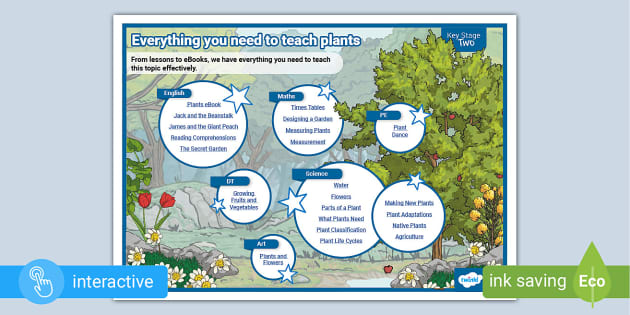Living Fence Construction: Plants, Planning & Installation

Table of Contents
Planning Your Living Fence
Before you begin digging, careful planning is crucial for successful living fence construction. This ensures your fence thrives and meets your aesthetic and functional needs.
Site Assessment: Understanding Your Landscape
Before selecting plants, assess your site thoroughly. This crucial step ensures the success of your living fence project.
- Property Line & Desired Height: Clearly define your property boundary and determine the desired height of your living fence. This dictates plant choices and spacing.
- Soil Analysis: Test your soil's composition and drainage. Amend the soil with compost or other organic matter if necessary to improve its structure and fertility, ensuring optimal plant growth. Poor drainage can lead to root rot and plant failure.
- Sunlight Exposure: Note the amount of sunlight your fence line receives throughout the day. Different plants require varying levels of sun exposure. Full sun, partial shade, or full shade locations will influence your plant selection.
- Prevailing Winds: Consider the direction and strength of prevailing winds in your area. Wind exposure can impact plant growth and health; you might need windbreaks or hardier plant varieties.
Choosing the Right Plants: Species Selection for Your Climate
Selecting the right plants is paramount for a successful living fence. Consider your climate, desired aesthetic, and maintenance level.
- Evergreen Options: For year-round screening and privacy, evergreen plants like Holly, Privet, and Arborvitae are excellent choices. They offer consistent density and visual appeal throughout the year.
- Deciduous Options: Deciduous plants like Hawthorn, Beech, and Crabapple provide seasonal interest with their changing foliage. They offer less dense screening in winter but can be beautiful in other seasons.
- Native Plants: Prioritize native plants for low-maintenance, eco-friendly living fence construction. They are adapted to your local climate and require less care than non-native species. Research locally suitable species.
- Thorny Varieties: For added security, consider thorny plants like Blackthorn or Hawthorn. These deter intruders and enhance privacy.
Designing Your Living Fence: Layout and Aesthetics
The design of your living fence influences its overall impact and functionality. Careful planning is essential.
- Fence Layout: Decide on a straight line or a curved design to complement your landscape's features.
- Single or Double Rows: A single row provides a less dense screen, while a double row offers increased density and privacy. Plant spacing is key to both designs.
- Plant Variety: Incorporate variations in plant height and texture for a visually appealing and dynamic living fence. This can add complexity and interest.
- Future Growth: Account for the mature size of your chosen plants. Allow sufficient spacing to prevent overcrowding as the plants grow.
Living Fence Installation: From Preparation to Planting
Proper installation is key to the long-term health and success of your living fence. Follow these steps for optimal results.
Preparing the Ground: Site Preparation for Planting
Before planting, prepare the ground thoroughly for successful living fence construction.
- Weed Removal: Completely remove all weeds and existing vegetation from the planting area. This prevents competition for resources and ensures healthy plant growth.
- Soil Tilling: Till the soil to a depth suitable for planting, ensuring it's loose and well-aerated.
- Soil Amendment: Improve soil quality by incorporating compost or other organic matter to enhance drainage, fertility, and structure.
Planting Your Living Fence: Techniques for Success
Planting correctly maximizes your living fence's growth potential.
- Digging Holes or Trenches: Dig individual holes or a continuous trench for planting, depending on your preferred method and plant types.
- Appropriate Spacing: Space plants according to their mature size to allow for adequate growth and prevent overcrowding.
- Thorough Watering: Water thoroughly after planting to help the roots settle and establish themselves.
- Plant Supports: For taller varieties, consider using plant supports, especially during the initial growth phase, to provide stability.
Post-Installation Care: Initial Maintenance for Healthy Growth
Post-planting care is vital for establishing your new living fence.
- Regular Watering: Water regularly, especially during dry periods, to ensure adequate moisture.
- Mulching: Apply a layer of mulch around the plants to retain soil moisture, suppress weeds, and regulate soil temperature.
- Fertilizing: Consider using a balanced fertilizer to promote healthy growth, particularly in the first few years.
Maintaining Your Living Fence: Ongoing Care for Longevity
Ongoing maintenance is crucial for a healthy and visually appealing living fence.
Regular Pruning and Trimming: Shaping and Controlling Growth
Regular pruning is essential for maintaining the shape, size, and health of your living fence.
- Shape Maintenance: Prune to maintain the desired shape and density of your fence.
- Deadwood Removal: Regularly remove dead, diseased, or damaged branches to prevent the spread of disease.
- Seasonal Pruning: Adjust your pruning schedule based on the specific needs of your plant species and the growing season.
Pest and Disease Control: Protecting Your Investment
Regularly monitor your living fence for pests and diseases.
- Early Detection: Identify and address potential problems promptly to prevent widespread damage.
- Organic Methods: Whenever possible, use organic pest control methods to protect beneficial insects and the environment.
- Expert Consultation: Consult with local gardening experts or your local agricultural extension office if you encounter serious pest or disease problems.
Ongoing Watering and Fertilizing: Sustaining Healthy Growth
Continue providing necessary care throughout the life of your living fence.
- Adaptive Watering: Adjust watering frequency based on weather conditions and the plants' needs.
- Annual Fertilization: Fertilize annually or as needed to maintain healthy growth and vibrancy.
Conclusion: Building Your Dream Living Fence
Building a living fence is a rewarding project that adds beauty, privacy, and sustainability to your property. By carefully planning your design, selecting the right plants, and following proper installation and maintenance techniques, you can create a thriving, natural boundary that will enhance your landscape for years to come. Remember to consider the key elements of living fence construction – planning, plant selection, and ongoing care – to ensure a successful and beautiful result. Start planning your own living fence today and enjoy the numerous benefits of this sustainable and aesthetically pleasing boundary!

Featured Posts
-
 Gesprek Knvb En Potentiele Opvolger Farioli Over Contract
May 29, 2025
Gesprek Knvb En Potentiele Opvolger Farioli Over Contract
May 29, 2025 -
 All Star Weekend Examining The Casting Choices Of Jamie Foxx
May 29, 2025
All Star Weekend Examining The Casting Choices Of Jamie Foxx
May 29, 2025 -
 Brann I Fire Bater I Oslo Nyhetsvarsel
May 29, 2025
Brann I Fire Bater I Oslo Nyhetsvarsel
May 29, 2025 -
 Info Cuaca Jawa Timur Hujan Diprediksi Lanjut Besok 24 3
May 29, 2025
Info Cuaca Jawa Timur Hujan Diprediksi Lanjut Besok 24 3
May 29, 2025 -
 Strong Q1 2025 Results From Qiagen Updated Full Year 2025 Outlook
May 29, 2025
Strong Q1 2025 Results From Qiagen Updated Full Year 2025 Outlook
May 29, 2025
Latest Posts
-
 Zukunft Der Augsburger Panther Ohne Stuermer Volek Ungewiss
May 30, 2025
Zukunft Der Augsburger Panther Ohne Stuermer Volek Ungewiss
May 30, 2025 -
 Dublin 2026 Metallicas Double Header At Aviva Stadium
May 30, 2025
Dublin 2026 Metallicas Double Header At Aviva Stadium
May 30, 2025 -
 Hoffenheims Kramaric Secures Draw With Late Penalty Against Augsburg
May 30, 2025
Hoffenheims Kramaric Secures Draw With Late Penalty Against Augsburg
May 30, 2025 -
 Kein Volek Mehr Bei Den Augsburger Panthern Die Suche Nach Einem Ersatz
May 30, 2025
Kein Volek Mehr Bei Den Augsburger Panthern Die Suche Nach Einem Ersatz
May 30, 2025 -
 Kramarics Penalty Earns Hoffenheim A Point Against Augsburg
May 30, 2025
Kramarics Penalty Earns Hoffenheim A Point Against Augsburg
May 30, 2025
